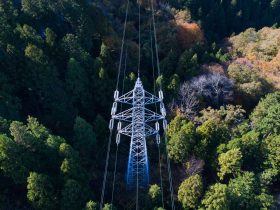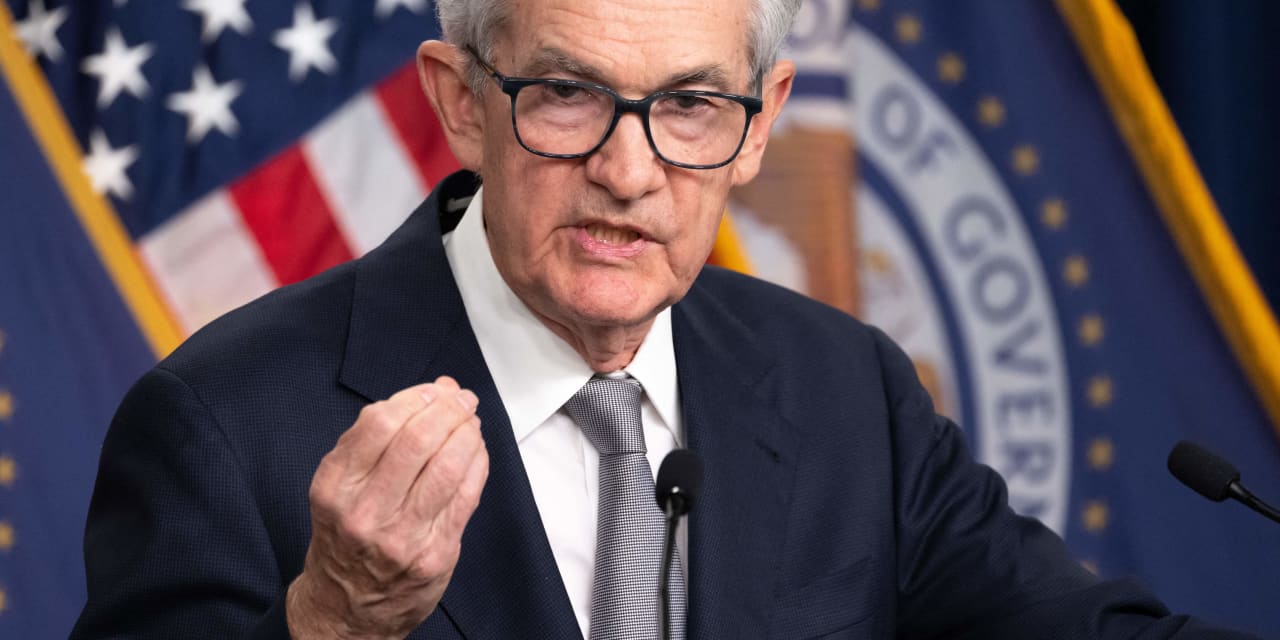Federal Reserve Chairman Jerome Powell said all the right things on Wednesday to keep alive the possibility of further interest rate hikes from the central bank. And yet another rate-hike pause in December—and beyond—seems increasingly likely.
The central bank’s decision to hold interest rates steady at the close of its two-day November meeting was expected. So the onus was on Powell during his press conference to say something—anything—to alter the broadly held view that despite elevated inflation, a tight labor market and a strong economy, the Fed is likely finished raising interest rates.
It never came. Where Powell used to say that Fed officials believed the risk of doing too little was far greater than the risk of doing too much, he is now saying that those risks are “getting more balanced.” He welcomed progress on both inflation and wage growth. He emphasized that rates are “clearly restrictive,” while acknowledging that the focus is now on “getting confident” that policy is sufficiently tight, suggesting it may already be.
And he heavily played down the importance of the Fed’s own quarterly projections for the federal-funds rate, known as the “dot plot.” As of September, it suggested one more quarter-point rate hike would be coming this year.
“I think the efficacy of the dot plot probably decays over the three-month period between that meeting and the next meeting,” Powell said, adding that the Fed’s projections are “not a promise or a plan for the future.”
Put it all together, and the Fed chairman’s commentary on Wednesday effectively raised the bar for what central bank officials will need to see to lift interest rates above their current level of 5.25% to 5.5%. With bond yields rising, financial conditions tightening and inflation cooling, that new threshold for rate hike might never be met.
Investors appear to agree. Shortly after the press conference ended, investors were pricing in an 82% chance the central bank would hold rates steady in December—up from a 70% chance the day before, the CME FedWatch tool showed.
“It seems to us that the FOMC is now in ‘hold’ mode, albeit in a hawkish way, rather than simply on ‘pause,’”
Wells Fargo
chief economist Jay Bryson wrote after the press conference.
To be sure, Powell was careful not to close the door entirely on the possibility of another rate hike, and he checked all the necessary boxes to preserve the central bank’s various policy options moving forward. The committee’s bias, he said, is still toward further tightening. Rate cuts aren’t under discussion at all.
And not even a third straight pause in December would preclude the committee from hiking again in January, he said, should officials decide further tightening is needed.
“He was careful to state that the FOMC was far from cutting,” wrote Steve Englander of Standard Chartered Bank, “but did not sound particularly eager to hike further.”
The circumstances that could lead to another rate hike aren’t impossible. Rising bond yields have made financial conditions restrictive of late, but Powell highlighted that it isn’t yet clear whether the recent run-up will last, and a reversal could create a need for further policy tightening.
Inflation could begin to tick upward through the end of the year as progress back to a 2% target rate starts to “come in lumps,” as Powell put it. Strength in the labor market could push wages back up, fueling further spending and another quarter of above-potential growth.
“We’re going into these meetings one by one,” Powell said.
The way the data is trending, however, it makes a rate hike seem unlikely.
The stage appears to be already set for the next meeting.
Write to Megan Cassella at megan.cassella@dowjones.com
Read the full article here













Leave a Reply